Enhancing Virtual (Reality) Connections
Zoom fatigue – articles on this growing trend seem as ubiquitous as webinars on how to use the platform. While there are varied views on how reentry will look as our associations once again hold in-person meetings, we will continue to provide opportunities for meaningful connection and engagement between members, even if they can not gather in the same space.
For most organizations, the transition to Zoom, GotoMeeting, or other videoconference platforms has been an easier lift than expected, yet these platforms provide only a moderately elevated performance over teleconferences. Yes, on videoconference it is possible to see the faces of those you are meeting with (provided the # of people is limited), which is definitely better than a conference call, where only auditory cues provide connection. However, if we are looking to affirm our associations are dynamic, meaningful homes for connection and community, it is time to start looking further forward and creating elevated connection experiences.
VR is Already Here
One place organizations should be experimenting is in the world of Virtual Reality (VR) which comprises two parts – the headset and the platform – which can be leveraged separately or together. The headsets are still a bit pricey and are mainly used for gaming or simulation training – but they are ripe for use in virtual meetings and events. There are applications in the world of architecture and design , real estate, and even medical training that can give you an idea of the variety of non-event experiences that can be created.
From Gaming to Collaborating
As we turn to consider the platform, we should pause and think about the experiences of our members and employees. A significant segment of the workforce has grown up steeped in the worlds of Warcraft, Halo, Fortnite, and League of Legends. Chatting (collaborating) with friends (coworkers) on a headset and going after an in-game objective (deliverables) all while navigating a virtual environment (not Zoom) is a common experience for many. You’d be surprised at how many, seriously. Perhaps one of the reasons we are so burned out sitting in front of our Zoom webinars is that it’s less natural than stepping our avatars into a virtual environment and brainstorming (discussing tactics) around a conference table (save point) with whiteboards and sticky notes (items). Current virtual meeting environments are a far cry from the immersive worlds that video game developers have created for us, but what if they weren’t? What if the gap closes and we can move around comfortably in a virtual space without leaving our homes/offices? What if we just skip over the forced smiles of Zoom and move directly into a VR platform enabled workspace where we can work with each other more naturally?
Barriers and Potential
If you go to Amazon, you will find the VR headsets that range from $40 to close to $1000. While there is an investment involved, it’s still cheaper than purchasing iPads for every board member. For organizations wanting to connect members over distances, or around the world, this is a way to close the gap. Inclusiveness is also heightened for those with physical travel limitations, debilitating illnesses, mobility challenges, and even the introverts among us. Whether a digital native or not, with or without exposure to video games, the learning curve is not steep. Also, there is great opportunity to engage our hard-to-reach younger members in creating a strong sense of community in the virtual space.
Where to Experiment, Where to Start
Associations don’t have to start from scratch – there are already platforms built or in process with whom they can partner, and the platforms can be used with multiple technologies from laptops, to tablets, to VR headsets. For example (not an endorsement) check out: https://meetinvr.net/ or https://glue.work/, or https://www.virbela.com/.
This is the perfect moment to step back and reflect – if we were going to scope a meeting of our members in a VR world, what would we provide? Do we want to form a small test group and experiment? If each Board member was given a headset they returned at the end of their service, and meetings were held in VR, how much more efficient would they be? And the cost? Think what you are saving in Board travel and hotel costs.
If you want to dip your toe in, maybe try it out internally for some VR team building.
How could your association use VR platforms to virtually engage with members or employees?
